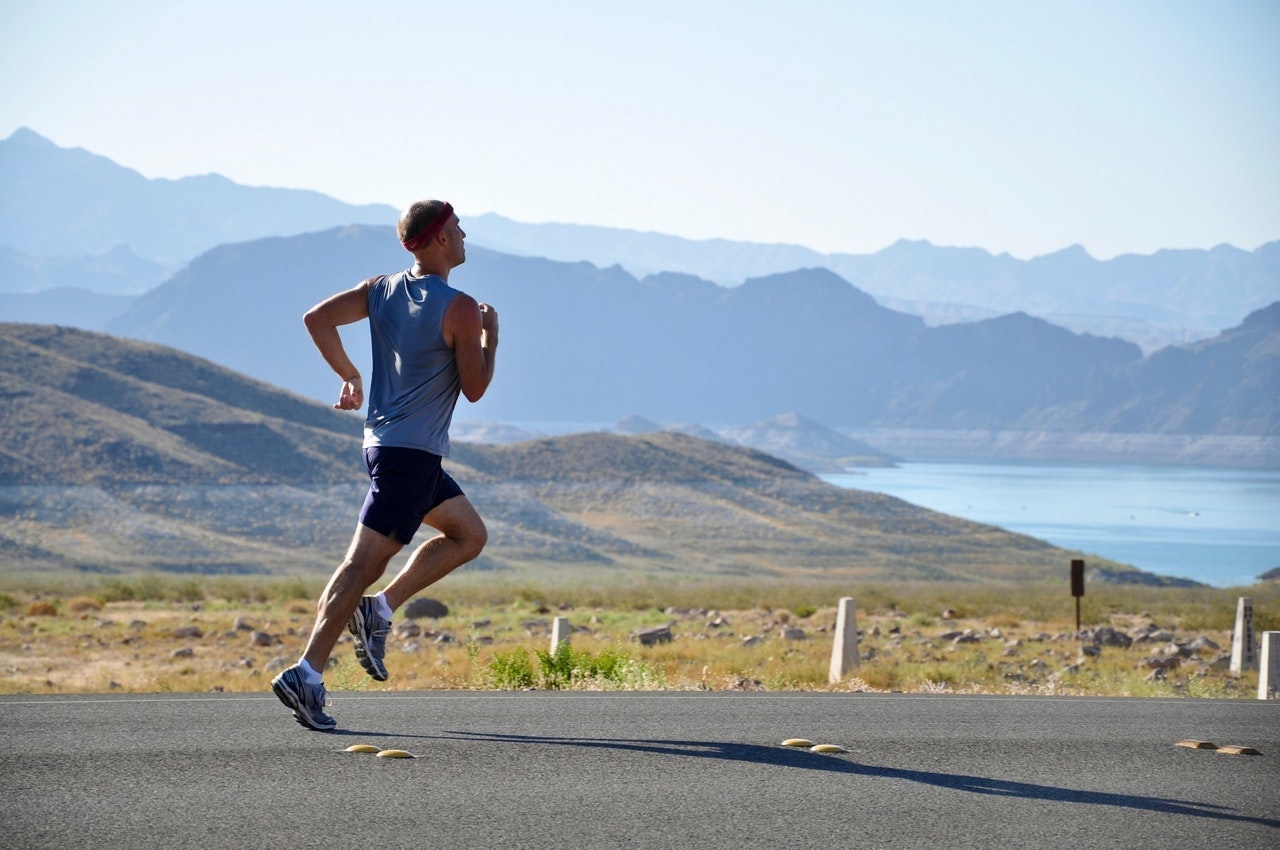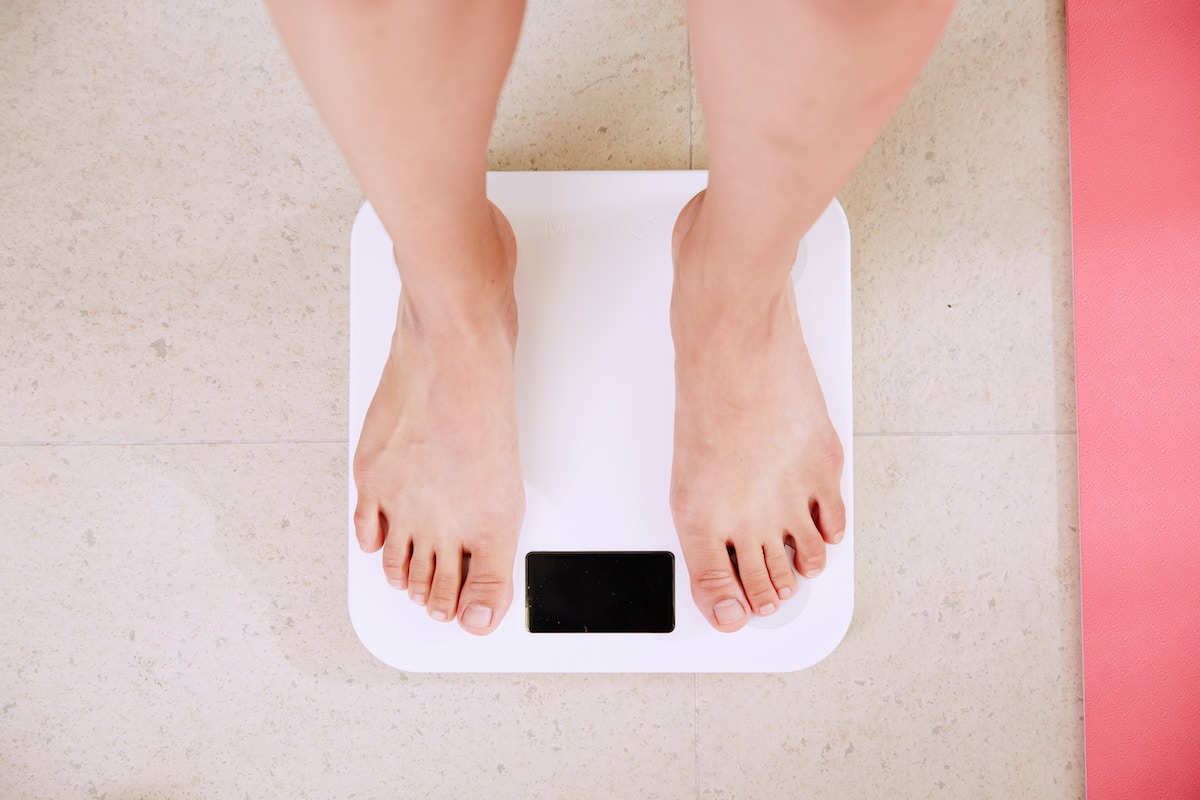This location is currently closed.
Not accepting new patients at this time.-
Latest Articles:
- • Strategies to Stay Calm and Joyful During the Season •
- • How to Stay Mentally Resilient in the Colder Months •
- • Three Delicious and Healthy Soup Recipes to Keep Warm This Winter •
Health WellNews
7 Ways Acupuncture Can Help With Running Injuries
Running is something that people do to keep their bodies healthy. But as with any physical activity, there can be pitfalls to avoid. When it comes to runners, things like sprains, strains, aches and pains are all too common. And they usually involve the ankles, knees or legs because those are the tools that runners use.

For most minor running injuries, some rest and heat or ice can be helpful. But occasionally there are issues that just don’t seem to go away and can impede a runner’s ability to train and get back on track. Things like plantar fasciitis, pateliofemoral syndrome (aka “runner’s knee”) and sciatica are all issues that may take more than just some rest to correct. This is where modalities like acupuncture can be very beneficial.
Acupuncture is a component of Traditional Chinese Medicine (TCM) that involves inserting hair-thin needles into the skin at specific points, which when stimulated, promote the body’s natural ability to heal itself. And while most runners seek out acupuncture as a way to treat an ache, pain or injury, many find that regular acupuncture treatments can actually improve their running by restoring balance and energy throughout the body. Here are seven ways that acupuncture can help with running injuries.
Acupuncture reduces inflammation. Inflammation is
common to running injuries. Inflammation is typically
caused by trauma or repetitive motion to the area. Inflammation occurs when cortisol levels are elevated and studies show that acupuncture can decrease cortisol levels very effectively, thus decreasing inflammation.
Acupuncture decreases swelling. Swelling is another common symptom of running injuries. It occurs when increased movement of fluid and white blood cells rush to the area that is inflamed. The swelling can remain for several days. But specific acupuncture points can actually help decrease the swelling, restoring proper fluid circulation to the injured area, also decreasing
the time it takes to heal.
Acupuncture promotes circulation. When the injured area is swollen and inflamed, proper circulation of blood and other bodily fluids will be limited. Specific acupoints have been shown to increase circulation throughout the body. And by placing needles around the affected area, it signals the body to send healing to that targeted area.
Acupuncture can correct muscle imbalances. When muscles become imbalanced, they can cause a chain reaction that results in muscle, tendon and joint pain. By utilizing motor points in the affected muscles, a release is elicited and the muscle can return to its correct position, which decreases stress on the injured area.
Acupuncture improves sleep. For runners, with or without injuries, sleep is vital. In order to be strong as a runner, the body needs time to heal in between each run. The CDC reports that nearly 10 percent of all Americans suffer from chronic insomnia and this includes runners. The benefit of acupuncture versus a sleeping pill is that acupuncture is customized to the person, treating the root cause and allowing the runner to get the quality sleep they need.
Acupuncture relieves pain. Runners tend to be very health conscious and taking pain relievers can come with some not so healthy side effects that can impede the runner’s ability to perform. Acupuncture relieves pain very effectively with no negative side effects. Acupuncture helps the nervous system produce painkilling chemicals and studies have confirmed this, which is why the World Health Organization endorses acupuncture for pain relief.
Acupuncture can relieve chronic stress. Stress of any kind, emotional or physical, can undermine the performance of a runner and cause all kinds of health issues. A recent study at Georgetown University showed that acupuncture suppressed stress-related hormone production and the effects lasted for up to four days. Think about that when you’re training.
If you’re one of the many weekend warriors and backyard athletes that use running as your release, then having a licensed acupuncturist on speed dial, might be a great way for you to stay healthy. Give it a try. You might be pleasantly surprised how amazing you feel in as little as one to
two treatments.
Acupuncture and Fatigue
Fatigue is defined as extreme tiredness, usually resulting from physical or mental exertion or illness. For most people, their bodies are programmed to be tired at night and alert during the day. However, work, family and other responsibilities frequently require that we ignore these innate programs and interrupt our natural sleep patterns. Statistics show that nearly 43 percent of all people in the workforce report being fatigued on a daily basis. This can ultimately lead to illness, accidents and even death. Fatigue is no joke and needs to be addressed.

Conventional medicine treats chronic fatigue with prescription medications, and while this may work for some, for many others it becomes an addiction. Traditional Chinese Medicine (TCM) offers a better alternative. TCM is a medical system that has been around for nearly 3,000 years. It utilizes multiple modalities to treat fatigue, including acupuncture, moxibustion, herbal formulas and nutrition. To determine the right treatment, a diagnosis must be made first.
TCM diagnosing is quite different from conventional medicine. Eastern Medicine considers the whole person when diagnosing and treating. TCM looks at the patient holistically, considering all aspects, including the mind, the body and the environment of the person. Diagnosis of a person includes inspection and observance of the expressions, colors, appearance, smells and any idiosyncrasies that may be present.
TCM also looks at the patient’s tongue and pulses on both wrists. These two practices are the primary diagnostic tools used in TCM. The tongue and pulses can reveal quite a bit of information about what is going on internally. Different areas of the tongue correspond to body systems and energetic pathways. For example, the tip of the tongue can show irregularities related to the heart and the mind. The rear of the tongue can show irregularities related to the urinary bladder and kidneys and is associated with the emotion of fear. The pulse is also broken down into six locations, three on each side, all of which correspond to a body system and the related energetic pathway.
With fatigue and TCM, there are multiple possible diagnoses, including energy deficiency, blood deficiency, phlegm / dampness accumulation, liver energy stagnation, etc. Each one of these patterns has their own unique symptoms, but they all have one thing in common: feelings of fatigue. While there is not enough time to discuss all of the aforementioned patterns, some of the symptoms can include poor digestion, dizziness, shortness of breath, vision issues, mood swings, irritability, depression, chronic coughing, sinus conditions, poor concentration and mental fogginess.
The modalities mentioned before, such as acupuncture, can help bring balance back into the body, thus correcting the symptoms and alleviating fatigue, over time. Moxibustion can warm the energetic pathways and help remove excessive phlegm accumulation in the body. Herbal formulas can treat any host of symptoms, as can proper nutrition, all of which will most likely be used by the seasoned TCM professional.
If you or somebody you know is suffering from fatigue, contact a licensed acupuncturist in your area. They can walk you through the diagnosis and treatment process and help you get back on the road to recovery.
Lose It: Weight Loss And Traditional Chinese Medicine
Traditional Chinese Medicine (TCM) can help with weight loss by evaluating the root of the problem. Acupuncture and herbs, along with changes in diet and an exercise plan, can help curb appetite, assist the digestive system, transform and transport food throughout the body and encourage regular elimination.

Here are three main contributors to weight gain and how TCM addresses them.
Hormones: Testosterone and estrogen imbalance can be likened to yin and yang. Yin is more feminine, still, dark, quiet, inward and moistening (our fluids are yin) and is likened to estrogen. Yang is more masculine, loud, outward, moving, hot and bright. It is likened to testosterone. The body continually achieves balance between these two elements. As we age, the hormone levels of testosterone and estrogen adjust and can create changes in the body such as weight gain. For example, women with higher estrogen develop increased fat storage, and women prescribed estrogen may be prone to weight gain. Treatment would include an herbal formula designed to adjust the hormones and a diet recommendation that would include foods that nourish yin, such as yams.
Dampness: In TCM the term dampness refers to water retention combined with fat stores due to overstimulation of insulin from poor diet and overeating. If this happens chronically, it weakens the spleen system (which is in charge of transformation and transportation of food in TCM, a different definition than that of the Western-medicine spleen).
Long-term depletion causes blockage of organs and channels leading to serious health risks for the kidney, spleen, heart and lungs. This happens in stages as acute damp retention becomes chronic and leads to deficiencies in the spleen and kidney, which leads to more chronic phlegm retention. An obese person would experience health issues such as diabetes and heart disease in this case. Treatment is best in the early, acute stages where dampness is still primarily middle-heavy. Herbs and acupuncture would drain the damp and a new diet would be implemented to prevent future issues. Foods such as barley, and soups to warm the spleen are benecial.
Eating habits and lifestyle: Overeating, eating quickly, indulging in processed foods and foods too cold, such as iced drinks and raw vegetables, impair the smooth function of the digestive system. Stress and irregular eating habits also can cause weight gain, as well as eating sugar to boost sagging energy or to calm emotions. In addition, eating heavily at night is not advisable because the body burns at a slower rate at night as it replenishes the yin cycle. Treatment in this case would include an adjustment in lifestyle and acupuncture for stress relief and appetite control.
TCM does not just see food biochemically. Food has qualities including temperature, taste, shape and color, which benefit specific organs and encourage their smooth function. For example, sour and green foods benefit the liver, bitter and red foods benefit the heart, and pungent, white foods benefit the lungs. If one has too much yang energy, there is too much heat and therefore cooling foods such as watermelon and cucumber would help achieve balance. In the case of a decline in yang, one would feel cold, so warmer foods like lamb and ginger would benefit. If one has too little yin, heat signs are present because the yang has become more exuberant. You would nourish the yin in this case with foods like yams or goji berries. Not only will the weight gain be addressed but the root of the issue as well. Ask me if you’re interested in learning more about TCM for your weight loss goals.
Gua Sha for Healthy Skin
There are many elements to keeping our skin healthy and vibrant. For instance, are we giving our bodies enough water each day? Are we eating healthy, organic, whole foods? Are we getting enough sleep? Are we dealing with our daily stressors? All of these things can affect how we feel on the inside and how we look on the outside. But in today’s busy society, many rarely take the time to care for themselves. This can show on our faces in the form of wrinkles, dry lackluster skin and even discoloration.

There is hope to fix this, and it’s called Gua Sha. Gua Sha may be just what the doctor ordered for attaining healthy skin.
Gua Sha is a technique that involves the quick, repetitive scraping of a flat jade, natural horn, ceramic or metal tool across the skin to relieve tension and pain and stimulate lymphatic drainage. It can be used anywhere on the body, but is frequently used as a part of facial acupuncture treatments.
Facial Gua Sha is gentler than when it is utilized in other areas of the body. When performing Gua Sha on the face, the tool is pulled along the skin instead of the deep scraping used on other areas. Also the tools used on the face are usually made of jade, rose quartz or porcelain, which provides a cooling sensation on the skin surface. The purpose of Gua Sha on the face is to increase lymph drainage and release facial muscle tension.
The lymphatic system relies on movement. We tend to get this vital movement through exercise or massage. But if you’re not engaging in regular exercise, the lymphatic system can become sluggish and clogged. This means that it doesn’t perform optimally. When lymph fluid is circulating and draining properly, added Gua Sha can reduce inflammation and increase the body’s ability to remove toxins and dirt that have built up in the skin. This means less facial puffiness, clearer sinuses and less acne.
Facial Gua Sha can be beneficial for reducing tension held in the face and neck areas too. This may lead to fewer headaches, less jaw tightness and decreased neck pain. For people who clench their teeth, Gua Sha can be a game changer because it releases the tension built up in the muscles.
One more thing that facial Gua Sha provides is exfoliation. The action of gentle scraping on the face improves blood flow and allows for the dead skin cells to slough off more easily and frequently. This can even out facial skin tone, creating a radiant, healthy complexion.
If you are concerned about your skin tone, fine lines and wrinkles or you are experiencing neck and jaw pain, facial Gua Sha might be the extra tool you need.
Acupuncture for Carpal Tunnel
As the weather warms, so too does the desire to be more active and spend time outside with friends and family. If you’re someone who spends a lot of the day on the computer, or in a job that requires other repetitive motions in your wrists and hands, you might be walking into summer in pain and wary of any upcoming bocce ball tournaments.

In some cases, repetitive movements of the wrist and fingers, including typing, can lead to carpal tunnel syndrome. Characterized by pain in the wrist and hand, carpal tunnel syndrome means the median nerve, which runs from the forearm to the wrist to the hand, has been compressed. This compression causes pain, numbness, tingling and occasional weakness of the wrist, arm and hand.
Conventional medicine treats true carpal tunnel syndrome with splints, non-steroidal anti-inflammatory medications and cortisone shots. If none of these work, then surgery is recommended. Carpal tunnel surgery is the second most common type of surgery in the United States, following back surgery.
However, many people who develop wrist pain are misdiagnosed with carpal tunnel syndrome and sent to surgery when it isn’t needed. This can lead to further, more serious complications. It’s important to find out if your discomfort is being caused by true carpal tunnel syndrome or just inflamed trigger points that need attention. When trigger points are “upset,” the pain can actually mimic the symptoms of carpal tunnel syndrome.
Traditional Chinese Medicine (TCM) utilizes acupuncture, as well as many other modalities, to treat pain associated with carpal tunnel syndrome. Acupuncture and electroacupuncture can be extremely beneficial for those suffering from this condition. A study conducted by Massachusetts General Hospital demonstrated acupuncture and electroacupuncture not only decrease pain, but also remap the brain. Before and after MRIs showed the carpal tunnel-related damage to the somatosensory cortex was repaired in participants who received acupuncture. This means those subjects actually showed continued improvement over time and their ability to function improved, too.
Acupuncture is a safer alternative to NSAIDs, cortisone shots and surgery. Studies confirm acupuncture decreases inflammation and restores function to tight muscles and tendons. Many studies show acupuncture eliminates the pain source rather than just masking the symptoms. Acupuncture is cheaper, less invasive and has a much higher probability of providing permanent relief. But in order to do this, the proper diagnosis must be made.
As mentioned before, angry trigger points can mimic carpal tunnel pain. Acupuncture can also be very beneficial for those experiencing trigger-point pain. Any one of the many muscles in the arms can become angry from repetitive motion. By stimulating painful trigger points with acupuncture needles, the muscles fire and release. This allows the muscle fibers to return to a relaxed state, relieving pain.
Wrist pain can be a serious burden for those who suffer from it, but before writing off the possibility of all summer lawn games this year, consider giving acupuncture a try.

